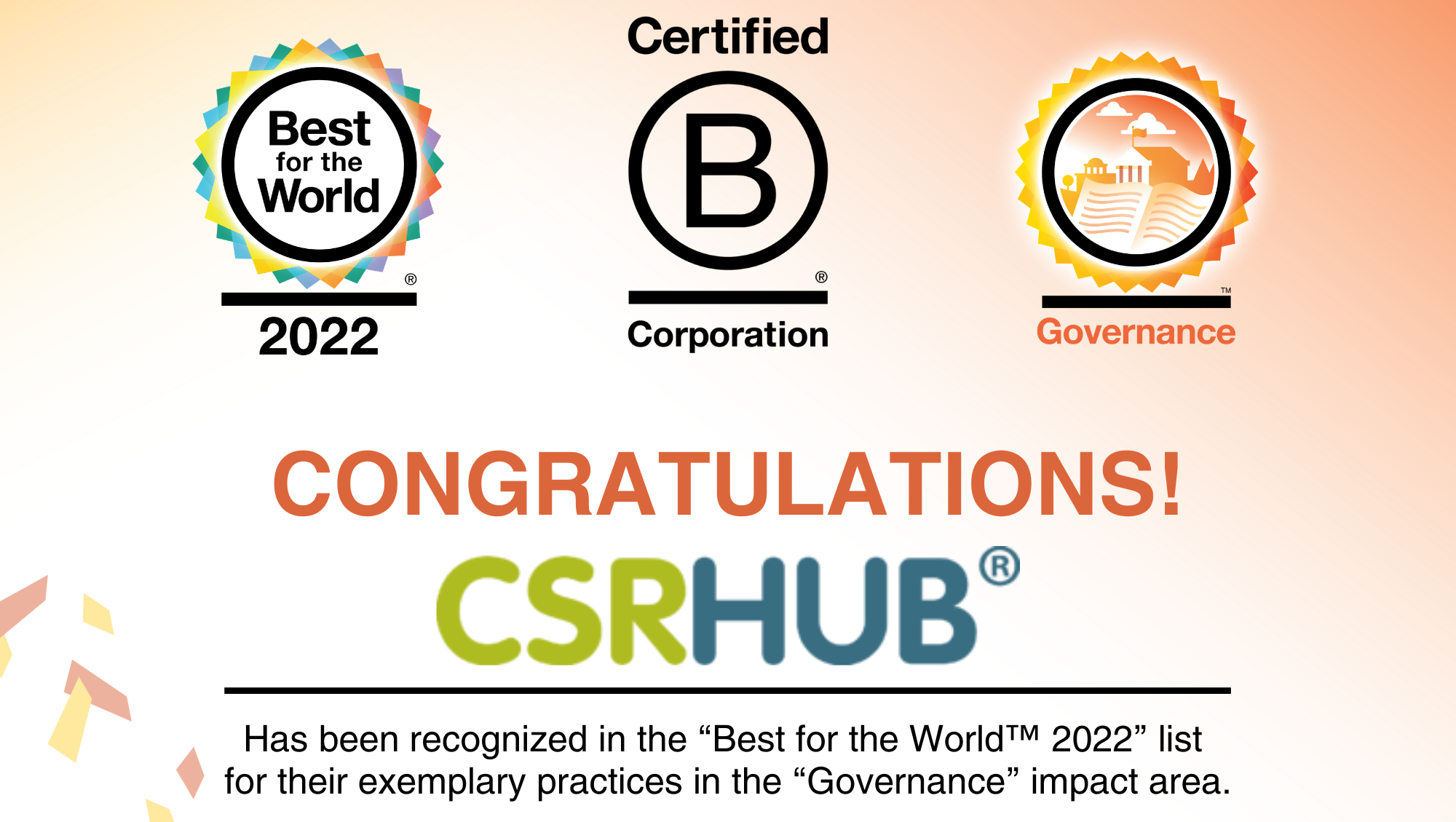By Bahar Gidwani
This post originally appeared in Triple Pundit.
In a previous post, we described the trove of corporate social responsibility (CSR) data that is available from finance-related researchers. One of the main places these firms get their data is from company-written CSR reports. Corporate Register offers links to more than 6,000 of these reports—from all types of companies and organizations.
How do companies decide what to report and how to report it? Since CSR and sustainability reporting are fairly new areas, most companies look outside of their accounting and management teams for guidance and standards. They get help from organizations such as:
Global Reporting Initiative (GRI): One of the first and most-widely used reporting standards bodies, GRI launched in the late 1990s with support from a who’s who of sustainability pioneers and backing from UNEP. Thanks to untold hours of work from stakeholders, technical advisors, and national organizations, GRI has defined and guided CSR reporting for more than 2,500 companies and organizations. The latest GRI standard (called G3) includes more than 160 areas for measurement and disclosure. GRI is now working to encourage mandatory dual reporting (where companies must report both their fiscal and social performance) by 2020.
International Standards Organization (ISO): We have all benefited for years from ISO standards for product quality, health, and safety. Now, ISO has created a standard for internal tracking and reporting social responsibility performance called ISO 26000. This massive project has benefited from input from 450 participating experts, 210 observers, and 42 liaison organizations. ISO26000 data can generally be “mapped” into the formats needed for other standards (such as GRI) so companies can use their internal data for external reporting. ISO also offers the ISO 14000 standard for environmental management. This standard helps companies track and improve their environmental performance.
Social Accountability International (SAI): The SA8000 standard is based on the UN Universal Declaration of Human Rights, Convention on the Rights of the Child and various International Labour Organization (ILO) conventions. It applies at the facility level—so companies may have only gone through the SA8000 process on some of their plants or offices. As of September of 2010, more than 2,300 facilities in 62 companies have received SAI certification—and many other facilities are at various stages in the process. Of course, many of the materials gathered during this type of certification can feed into an organization’s CSR report.
Impact Reporting and Investment Standards (IRIS): The Global Impact Investing Rating System (GIIRS) was launched to give company ratings to impact investors (those who want to use their investments to generate positive change). As part of this ambitious effort, GIIRS has helped to develop IRIS—an independent set of standards that would help mission-driven businesses measure and report their social impact. The current IRIS taxonomy includes five spreadsheets of measurement processes and more than 90 definitions.
UL Environment: There are several emerging efforts underway to give companies a voluntary standard way of rating themselves, and obtaining third party verification. These include an exciting project by UL Environment, in partnership with Greener World Media, which is developing an organization-wide sustainability standard that will be used to assess corporate policies and practices, known as the ULE 880.
B Corporation (B Corp): More than 360 companies (including CSRHUB) have now completed the B Corp assessment process. We answered a long list of questions about our social behavior and then were quizzed about various aspects of our performance. We got a passing grade—plus good reminders about the social side of our mission and management approach. B Corp reveals a list of the companies that have completed the assessment, but does not yet share most of the data it gathers.
In general, there is a gap between the data companies gather and the data that they reveal, via CSR reports, regulatory filings, and other communication activities. There may also be a gap between the data companies report and their true performance. Most CSR standards allow for “third party verification.” However, in many cases, the only groups with the necessary training and experience to serve as verifiers are CSR and sustainability consulting groups—with the fees for their reviews paid by the companies they are reviewing. This leads to charges such as “greenwashing” and to a lack of the uniform reporting and transparency required to prove the effectiveness and credibility of these standards. CSR standards groups are doing worthy and necessary work—but they need more regulatory and marketplace support to force companies and organizations to comply with both the spirit and the letter of their standards.
Bahar Gidwani is Cofounder and CEO of CSRHUB. He was the CEO of New York-based Index Stock Imagery, Inc, from 1991 through its sale in 2006. He has built and run large technology-based businesses, and has experience building a multi-million visitor Web site. Bahar holds a CFA, worked on Wall Street with Kidder, Peabody, and with McKinsey. Bahar has consulted to companies including Citibank, Banco Portuguese do Atlantico, Crane Co., Sperry, GE, General Dynamics, Computer Associates, Oracle, Microsoft, Computer Sciences, EDS, Cerner, and Acxiom. He has an MBA from Harvard Business School. Bahar is based in New York City.
CSRHUB is a corporate social responsibility ratings tool that allows managers, researchers, consultants, academics and individual activists to track the CSR performance of major companies. We aggregate data from more than 90 sources to provide our users with a comprehensive source of CSR information about 5000+ publicly traded companies in 62 countries. Browse our ratings at www.csrhub.com.



